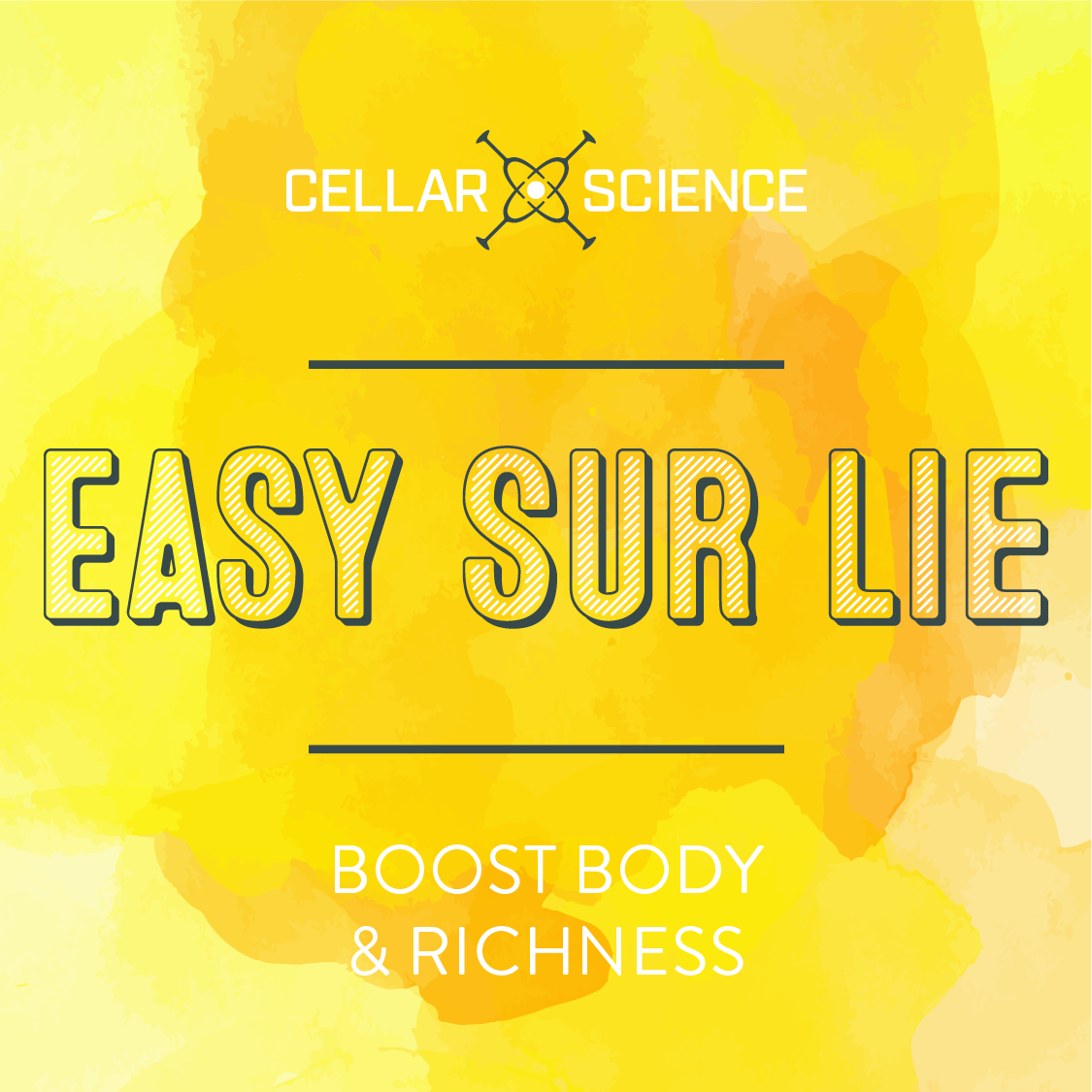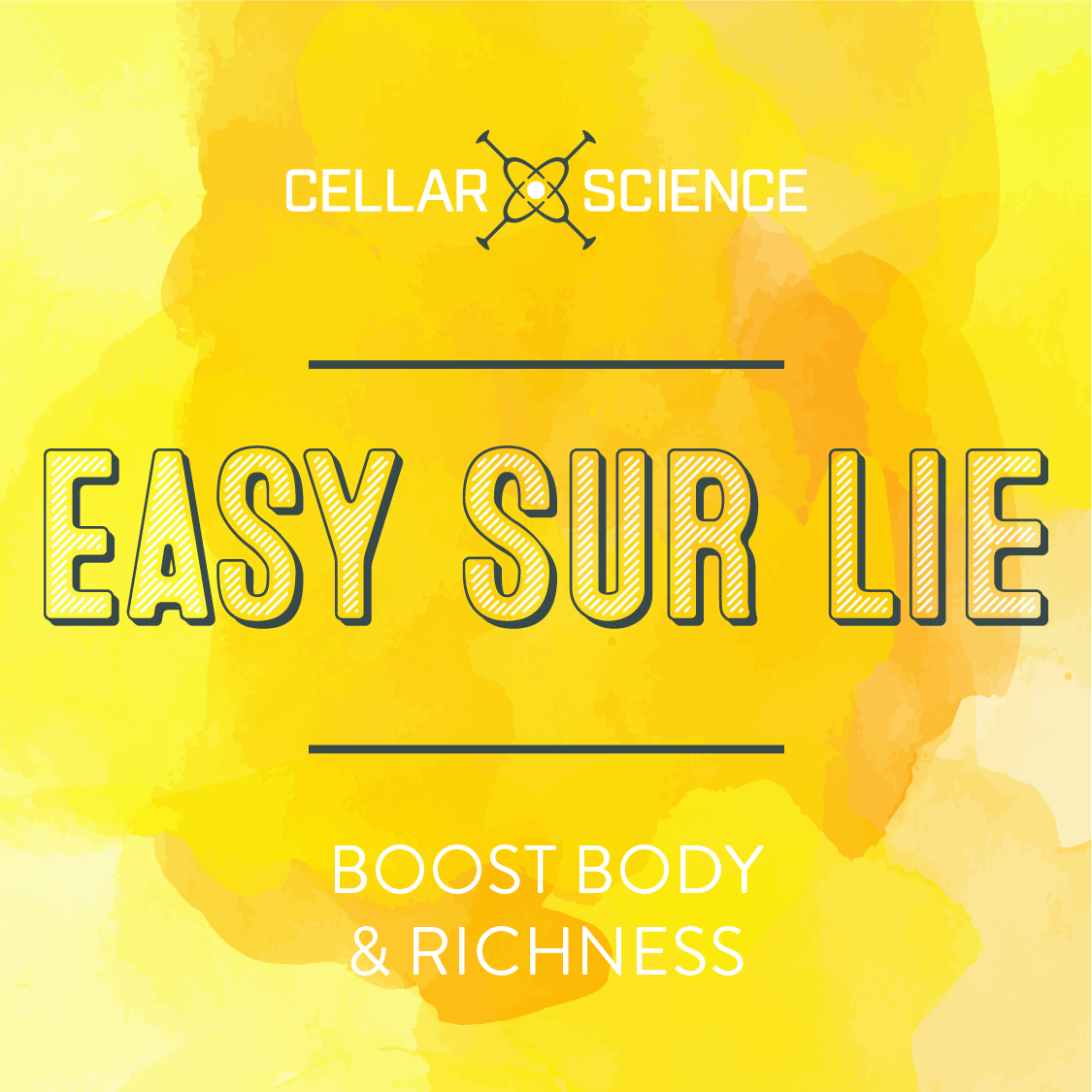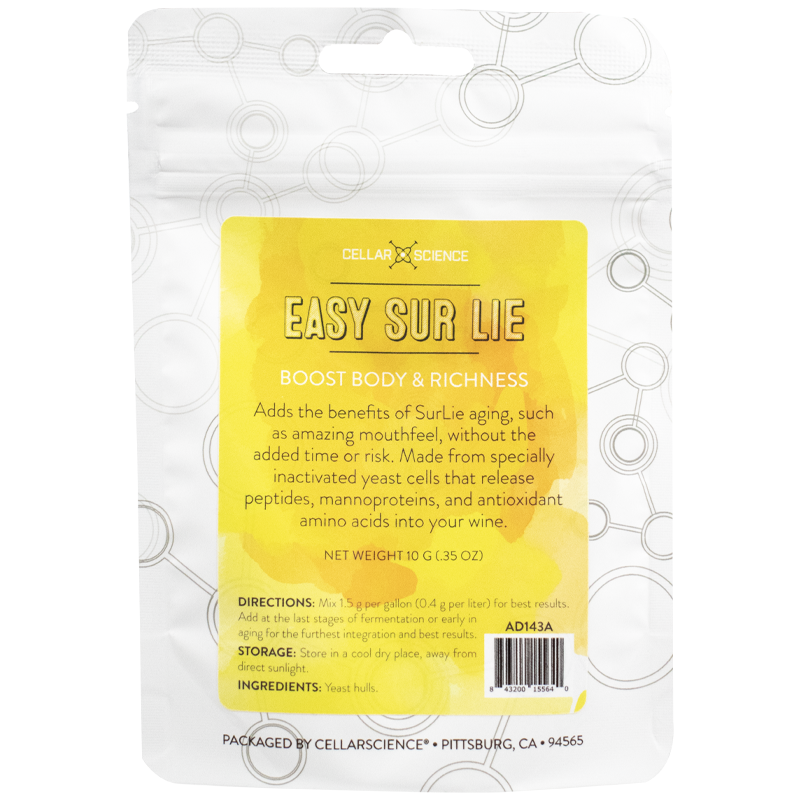Cellar Science
EASY SUR LIE Boost Body & Richness
EASY SUR LIE Boost Body & Richness
- All the benefits of Sur Lie aging without the risks
- Luxurious, soft mouthfeel
- Perfect for your big body whites
- Helps reduce browning
- Produced from yeast cells and considered an SIY (especially inactivated yeast)
CellarScience Easy Sur Lie offers all the benefits of doing a sur lie aging without the risk. Sur lie aging, often also referred to by the French term Battonage, is the process where wine is left on the original lees. or yeast, at the end of fermentation. Battonage specifically refers to the process of stirring lees back into solution over a few weeks to add body and richness to the wine. Exactly how it is done depends on the winemaker. Some choose to leave the wine on the gross lees while some choose to remove the wine quickly from the gross less and then stir up a clean version of the remaining yeast that settles out. Either way, there is some risk in this process of extracting some flavors you don't want while also potentially adding unwanted oxygen into the wine.
During Sur lie the yeast cells are breaking down, releasing peptides, mannoproteins, and anti-oxidant amino acid proteins, and other yeast cell compounds. These compounds add that luxurious, soft mouthfeel to wine that is so desired. CellarScience Easy Sur Lie adds these compounds into the wine without having to take the risk and time/cost of doing an actual Sur Lie aging and stirring protocol.
Easy Sur Lie also has some extra benefits. It helps prevent the formation of mercaptans, reducing potential sulfur compounds that can mask the full potential of your wine. It also functions as an antioxidant. Yeast at the bottom of naturally carbonated beer bottles is long known as an antioxidant that helps keep packaged beer fresher longer. Easy Sur Lie in your wine works in a similar way, supporting SO2 to help ensure freshness and reduce browning reactions.
Can be added at the end of fermentation and throughout the aging process.
Use:
Mix 1.5 g per gal (0.4 g per liter) for best results. Add at the last stages of fermentation or early in aging for the furthest integration and best results.




